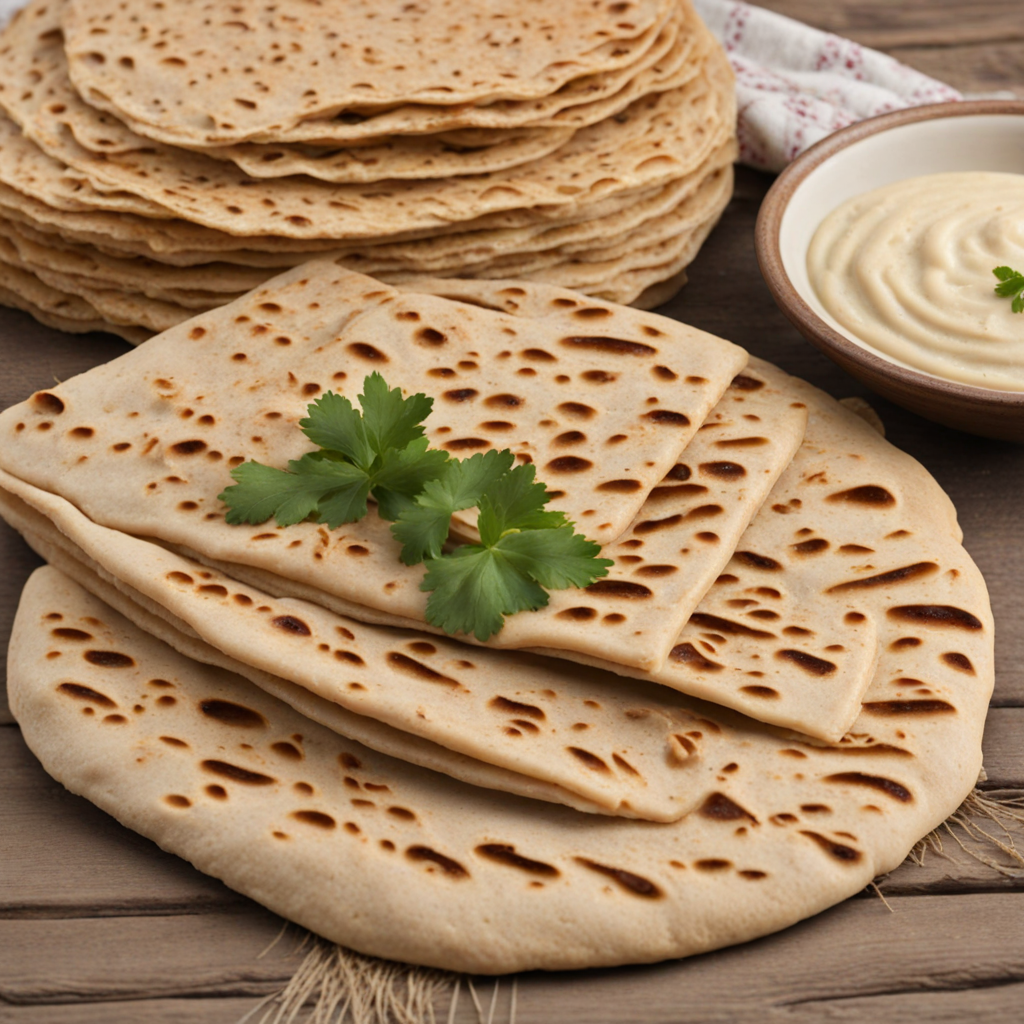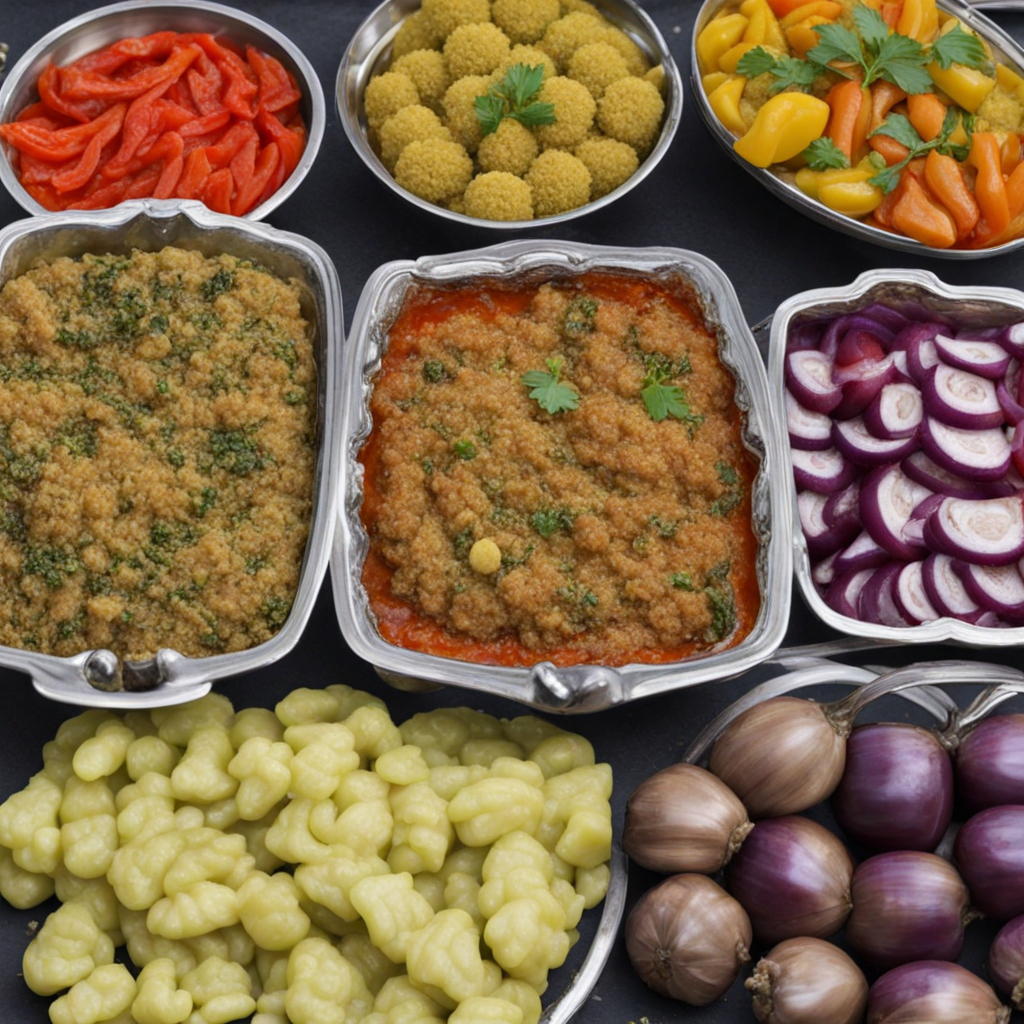Hawawshi
Hawawshi is a beloved Egyptian street food that tantalizes the taste buds with its unique blend of flavors and textures. At its core, Hawawshi consists of a spiced minced meat filling, typically made from beef or lamb, mixed with a medley of herbs, onions, and spices such as cumin and paprika. This savory mixture is enveloped in a flatbread, often a type of Egyptian pita, which is then baked or grilled until it reaches a perfectly crispy exterior while maintaining a juicy and succulent interior. The aroma wafting from a freshly cooked Hawawshi is enough to draw anyone in, promising a delightful culinary experience. What sets Hawawshi apart is its versatility and the regional variations found throughout Egypt. Vendors often have their own secret spice blends or additional ingredients, such as bell peppers or chili, which can enhance the flavor profile and cater to different palates. The bread serves not only as a vessel for the filling but also absorbs the flavors, making each bite a harmonious blend of spices and textures. Served hot and often accompanied by a side of tangy pickles or a fresh salad, Hawawshi is a meal that can stand on its own or be shared among friends during a casual gathering. Hawawshi is more than just food; it embodies the essence of Egyptian culture and hospitality. Whether enjoyed at a bustling street corner or in a cozy home setting, it brings people together, making it a popular choice for lunch or dinner. The experience of eating Hawawshi is one that combines the warmth of freshly baked bread, the kick of aromatic spices, and the rich history of a dish that has been cherished for generations, inviting food lovers to savor and explore the delightful taste of Egypt.
How It Became This Dish
The History of حواوشي (Hawawshi): A Culinary Gem of Egypt #### Origins of حواوشي Hawawshi, a beloved Egyptian street food, is a savory delight that embodies the rich culinary traditions of the nation. Its origins can be traced back to the bustling streets of Cairo, where it is believed to have emerged in the late 19th century. The dish consists of spiced minced meat, often mixed with onions, peppers, and a variety of herbs, which is then stuffed into a type of baladi bread (a traditional Egyptian flatbread) and baked until golden brown and crispy. The name "Hawawshi" is thought to derive from the Arabic word "حوش," meaning "to surround" or "to encircle," alluding to how the bread encases the meat filling. While the exact timeline of its creation is difficult to pinpoint, culinary historians suggest that Hawawshi evolved as a street food during a period of urbanization and increased trade in Egypt, influenced by the diverse cultures that settled in the region over centuries. #### Cultural Significance Hawawshi is more than just food; it is a cultural symbol that reflects the social fabric of Egyptian society. Traditionally, it has been a dish enjoyed by families, friends, and communities, often served during gatherings and celebrations. Its affordability and ease of preparation made it accessible to people from all walks of life, cementing its status as a staple of Egyptian street food culture. In Cairo, vendors often set up shop in busy neighborhoods, creating an atmosphere that draws in locals and tourists alike. The preparation of Hawawshi can be a communal activity, with families gathering to make it together, sharing recipes that have been passed down through generations. This aspect highlights the dish's role in fostering connections and bringing people together around the table. Moreover, the dish reflects Egypt's diverse culinary influences, from the Mediterranean to Middle Eastern flavors. The incorporation of various spices, such as cumin, coriander, and allspice, showcases the melting pot of cultures that have influenced Egyptian cuisine over the centuries. The use of fresh ingredients, a hallmark of Egyptian cooking, also lends a vibrant quality to Hawawshi, making it not only delicious but also nutritious. #### Development Over Time As Egypt's history progressed, so did the culinary landscape, including the evolution of Hawawshi. Initially, the dish was simple, primarily featuring minced beef or lamb, seasoned with basic spices. However, as culinary practices evolved, so did the complexity of the dish. By the mid-20th century, regional variations began to emerge, each with its unique twist on the classic recipe. In urban centers like Cairo and Alexandria, Hawawshi vendors started incorporating additional ingredients such as garlic, chili peppers, and even cheese to create a richer flavor profile. The introduction of these elements not only enhanced the taste but also appealed to a broader audience, leading to an increase in its popularity. The 1980s and 1990s marked a significant turning point for Hawawshi, coinciding with Egypt's economic transformations and the rise of fast food culture. As global food trends began to influence local cuisine, Hawawshi adapted to the changing tastes of the Egyptian populace. The dish became more mainstream, with restaurants and food chains incorporating it into their menus, often offering variations such as chicken or even vegetarian options to cater to diverse dietary preferences. In recent years, Hawawshi has garnered international attention, thanks to the growing interest in Middle Eastern cuisine. Food bloggers, chefs, and culinary enthusiasts have showcased the dish on social media platforms, contributing to its global recognition. This newfound fame has led to innovative interpretations of Hawawshi, with chefs experimenting with fusion styles, such as incorporating international spices or cooking techniques. For instance, some have introduced a barbecue twist, grilling the stuffed bread instead of baking it, lending a smoky flavor that contrasts with the traditional method. #### Modern-Day Hawawshi Today, Hawawshi remains a quintessential part of Egyptian street food culture, beloved by both locals and visitors. The dish is often sold by street vendors, who have perfected their recipes over the years, creating a delightful experience for anyone willing to sample it. The aroma of freshly baked Hawawshi wafting through the air is enough to entice passersby, making it an irresistible treat. Modern variations continue to flourish, reflecting the ongoing evolution of Egyptian cuisine. Some vendors offer "Hawawshi with a twist," adding ingredients like mushrooms, spinach, or even seafood to the traditional meat filling. Meanwhile, health-conscious variations have also emerged, featuring whole grain or gluten-free breads and leaner meat options, catering to changing dietary trends. Culinary festivals and food markets often showcase Hawawshi as a highlight, celebrating its heritage while introducing it to new audiences. Chefs and home cooks alike take pride in their unique takes on the dish, leading to friendly competitions and collaborations, ensuring that Hawawshi continues to thrive in the culinary scene. #### Conclusion Hawawshi is more than just a dish; it is a vibrant representation of Egypt's rich culinary heritage, weaving together history, culture, and community. From its humble beginnings as a street food staple to its modern-day iterations, the evolution of Hawawshi mirrors the dynamic nature of Egyptian society and its food culture. As it continues to adapt and innovate, Hawawshi remains a cherished emblem of Egypt, inviting everyone to savor its delicious flavors and the stories that come with it. Whether enjoyed on the streets of Cairo or in a modern kitchen, Hawawshi connects generations and cultures, ensuring its place in the hearts and palates of many for years to come.
You may like
Discover local flavors from Egypt







